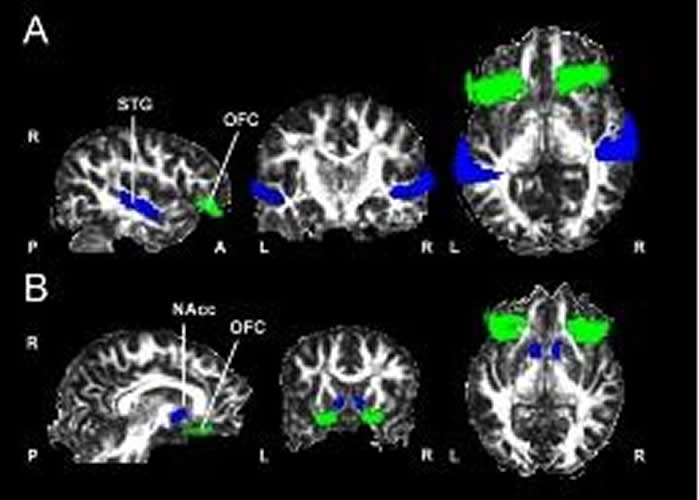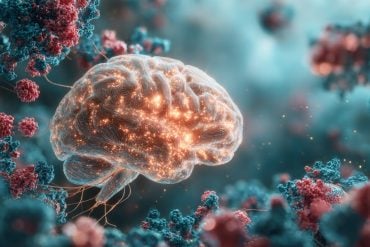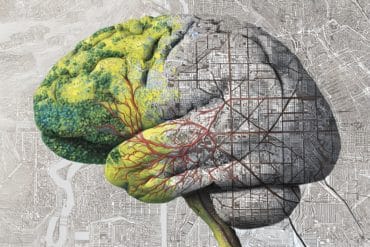Summary: White matter connectivity between the auditory processing areas and brain areas associated with reward may explain why we like, or dislike music.
Source: University of Barcelona
The white matter structure in the brain reflects music sensitivity, according to a study by the research group on Cognition and Brain Plasticity of the Institute of Neurosciences of the University of Barcelona (UB) and the Bellvitge Biomedical Research Institute (UB-IDIBELL).
The study, published in Journal of Neuroscience, shows that white matter connectivity, the tissue through which the different areas in the central nervous system communicate, is essential to understand why we like or dislike music. Also, it shows that brain reward structures have to work with perception structures so that people enjoy music.
UB researcher Josep Marco-Pallarés leads a study in which Antoni Rodríguez-Fornells (UB-IDIBELL-ICREA), Noelia Martínez-Molina, from the University of Helsinki (Finland), and Ernest Mas-Herrero and Robert Zatorre, from the McGill University (Canada)- have taken part.
People who do not feel any pleasure with music
Listening to music is regarded as a satisfying activity, but previous studies by this group showed there is an individual unevenness: there are people who could not live without music, and others who do not enjoy it at all, a condition that has been called specific musical anhedonia. According to Josep Marco-Pallarés, “this phenomenon occurs to healthy people, without any pathology. Therefore, people with specific musical anhedonia enjoy other stimuli (such as food, or money rewards), but they are not sensitive to a musical reward”.
The study of the specific musical anhedonia determined that individual differences regarding musical rewards were related to the functional connectivity (different patterns of neuronal activation in different brain regions) in the auditory cortex, specifically the supratemporal auditory cortex, and a key area in the rewarding process, the ventral striatum. Thus, musical sensitivity depended on the work of these two areas together.
The objective of the new study was to find out whether musical sensitivity was defined by how perception process areas and reward system areas were connected. The experiment was conducted with thirty-eight healthy volunteers using imaging-functional magnetic resonance, which enables the reconstruction of the structure of the brain white matter, the white matter bundles that connect different brain regions.
Participants’ musical sensitivity was determined through the obtained score in a questionnaire created by the same research group, the Barcelona Music Reward Questionnaire (BMRQ), which defined their musical sensitivity. After that, during the magnetic resonance session, participants had to listen to extracts from classical music songs and provide pleasure values ranging from 1 to 4 in real time. To control their brain response in other types of rewards, participants had to play in a money bet activity in which they could win or lose real money. None of the participants showed a low score in the general reward scale, showing that individual differences in the reward process are limited to music and not other stimuli.

The results of the experiment shows there is a relation between the white matter structures connecting the musical cortex and the activity in the reward system. According to Josep Marc-Pallarés, “the study shows musical sensitivity is related to white matter structures that connect, on the one hand, the supratemporal auditory cortex with the orbitofrontal cortex, and on the other, the orbitofrontal cortex with the ventral striatum”.
Why there is only musical anhedonia?
These results highlight the need to widen the study focus to understand the functioning of the brain reward systems. “We cannot study only the reward network, we need to know how stimuli access the reward system. This could be the key to understand why there are specific anhedonia for a specific stimulus like music but not for other stimuli like games or food, which could have other applications for the understanding of several pathologies that are related to specific addictions or specific anhedonia for a certain stimulus”, concludes Josep Marco-Pallarés.
Source:
University of Barcelona
Media Contacts:
Rosa Martínez – University of Barcelona
Image Source:
The image is credited to Journal of Neuroscience.
Original Research: Closed access
“White Matter Microstructure Reflects Individual Differences in Music Reward Sensitivity”. Noelia Martínez-Molina, Ernest Mas-Herrero, Antoni Rodríguez-Fornells, Robert J. Zatorre and Josep Marco-Pallarés.
Journal of Neuroscience. doi:10.1523/JNEUROSCI.2020-18.2019
Abstract
White Matter Microstructure Reflects Individual Differences in Music Reward Sensitivity
People show considerable variability in the degree of pleasure they experience from music. These individual differences in music reward sensitivity are driven by variability in functional connectivity between the nucleus accumbens (NAcc), a key structure of the reward system, and the right superior temporal gyrus (STG). However, it is unknown whether a neuroanatomical basis exists for this variability. We used diffusion tensor imaging and probabilistic tractography to study the relationship between music reward sensitivity and white matter microstructure connecting these two regions via the orbitofrontal cortex (OFC) in 38 healthy human participants (24 females and 14 males). We found that right axial diffusivity (AD) in the STG–OFC connectivity inversely correlated with music reward sensitivity. Additionally, right mean diffusivity and left AD in the NAcc-OFC tract also showed an inverse correlation. Further, AD in this tract also correlated with previously acquired BOLD activity during music listening, but not for a control monetary reward task in the NAcc. Finally, we used mediation analysis to show that AD in the NAcc–OFC tract explains the influence of NAcc activation during a music task on music reward sensitivity. Overall, our results provide further support for the idea that the exchange of information among perceptual, integrative, and reward systems is important for musical pleasure, and that individual differences in the structure of the relevant anatomical connectivity influences the degree to which people are able to derive such pleasure.
SIGNIFICANCE STATEMENT
Music is one of the most important sources of pleasure for many people, but at the same time there are important individual differences in the sensitivity to musical reward. Previous studies have revealed the critical involvement of the functional connectivity between perceptual and subcortical brain areas in the enjoyment of music. However, it is unknown whether individual differences in music sensitivity might arise from variability in the structural connectivity among these areas. Here we show that structural connectivity between supratemporal and orbitofrontal cortices, and between orbitofrontal and nucleus accumbens, predict individual differences in sensibility to music reward. These results provide evidence for the critical involvement of the interaction between the subcortical reward system and higher-order cortical areas in music-induced pleasure.






